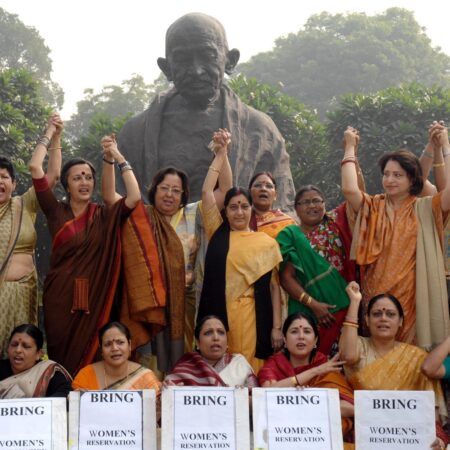India annual merchandise exports have hit $400 billion for the first time, achieving the target set by the government 9 days ahead of schedule.
The government is confident of clocking $410 billions of exports by March 31 as India has been shipping out goods worth more than $1 billion a day.
Products that led to $400 billion?
Engineering goods, petroleum products, gems and jewelry, chemicals, and ready-made garments of all textiles were the top five commodities exported from India.
Exports of engineering goods rose by 32% in the first 11 months of this fiscal compared to the last financial year and it remained the biggest export item.
Within this category, the top exports were iron and steel, aluminum and its products, electric machinery, and motor vehicles.
Export of crude oil showed the sharpest jump of 114% which was driven by a rise in crude oil prices meanwhile agriculture exports hit new records, driven by commodities such as rice, marine products, wheat, spices, and sugar being among others.
$1 Trillion
India’s commerce minister, Piyush Goyal is now busy planning for the country’s manufacturing and service sector to clock in a record $1 trillion export in the next 10 years.
At the Forbes annual leadership awards ceremony (FILA 2022) in Mumbai, Piyush Goyal said “Now it’s time for the service and manufacturing sector to race to the top and see who will cross the $1 trillion export mark first”.
India’s $400 billion export figure announced earlier this week is significantly higher than the previous record of $330 billion achieved in 2018-19 and 41 % higher than the previous financial year when India exported goods worth $291 billion.
At FILA 22, Piyush Goyal further added, “The service sector is already at $250 billion and will soon have the numbers on service exports and I promise you that’s going to be very exciting”.
While COVID-19 has caused a blip in India’s fast-paced growth and largely due to the lack of investments from the private sector, Minister Piyush Goyal further reckons that the massive boost to exports in the coming years has the potential to change the everyday life of millions of Indians.
Was it India’s best performance?
While a surge in export is good news especially after the pandemic ravaged the economy, policymakers mustn’t lose sight of the fact this is not India’s best performance.
India’s export performance had peaked in the last year of the UPA government’s tenure in theFY14 when the exports to GDP ratio had shot up to 25.4%.
In other words, more than a quarter of the GDP was coming out of the exports sector, and in fact, during the boom years of the UPA government exports were one of the growth engines of the economy driving both creation of jobs and GDP growth.
What is special about this time?
In contrast, despite making the $400 billion mark for the first time this year the export to GDP ratio will barely cross 20%.
For all the protection offered by the Modi government to domestic manufacturing in the form of sharp tariff increases and the fiscal subsidies from the budget by way of productivity linked incentives, Exports are yet to match the exports to the GDP level of FY14, the year that marked the height of the UPA governments ignoble policy paralysis phase.
In other words, more than a quarter of the GDP was coming out of the exports sector, and during the boom years of the UPA government exports were one of the growth engines of the economy, driving both jobs creation and GDP growth.
The exports to GDP ratio started declining after peaking in FY14 and was down by 23% in FY15, the first year of the Modi government’s tenure but it didn’t stop there and further declined to 18.8% in FY18. When the recovery was starting to happen and improved to 19.9% in FY19 but then slipped back to 18.7% in FY20 and a similar scenario was also with FY21.
But where are we lacking?
India’s trade in merchandise trade is languishing behind that of competing economies.
India’s share in global merchandise exports increased from 0.66% to 1.57% in the two decades from 2000 to 2020 which was very similar to the growth shown by Vietnam from 0.22% to 1.6% which surpassed India for the very first time. At that very same time, China’s share shot up from 3.86% to 14%.
Poor policymaking hurt India’s export competitiveness when the economy, especially small and labor-intensive firms, was hobbled by demonetization and a poorly conceptualized, implemented goods & services tax (GST).
These shocks dealt with the economy came over and above the legacy bottleneck of the banking crisis.
Confederation of Indian Industry (CII) has identified 14 products to drive the present export to $1 trillion which includes pharmaceutical products, electrical machinery, vehicles, plastics, furniture, textiles, etc.
These would contribute over half of the target while the rest would be met by fuels, gems & jewelry being others.
In the roadmap of CII, to achieve this target the industry chambers said that India requires a 14% CAGR from 2022-to 2030. Its share in global exports must be pegged at 5% in 2030 entailing 11 times growth over 0.55% share in 2019.
Three other specific areas where new goods are emerging are defense, sustainability, and digital technology can be promoted to develop manufacturing and export capabilities.
In defense technology and manufacturing, the target is to achieve $5 billion in exports from the level of $1.2 billion in 2021, which has the potential to be double and become $10 billion by 2030.
While focusing on solar panels, EVs, and green products are high especially keeping India’s ambitious energy transition and net-zero carbon emitter by 2070.
Drones, robotics and automation, smart products can be given a boost through sector-specific policies along the lines of the production-linked incentive schemes where these are not in place.
Published By : VATSAL KOTHA
Edited By : KRITIKA KASHYAP













